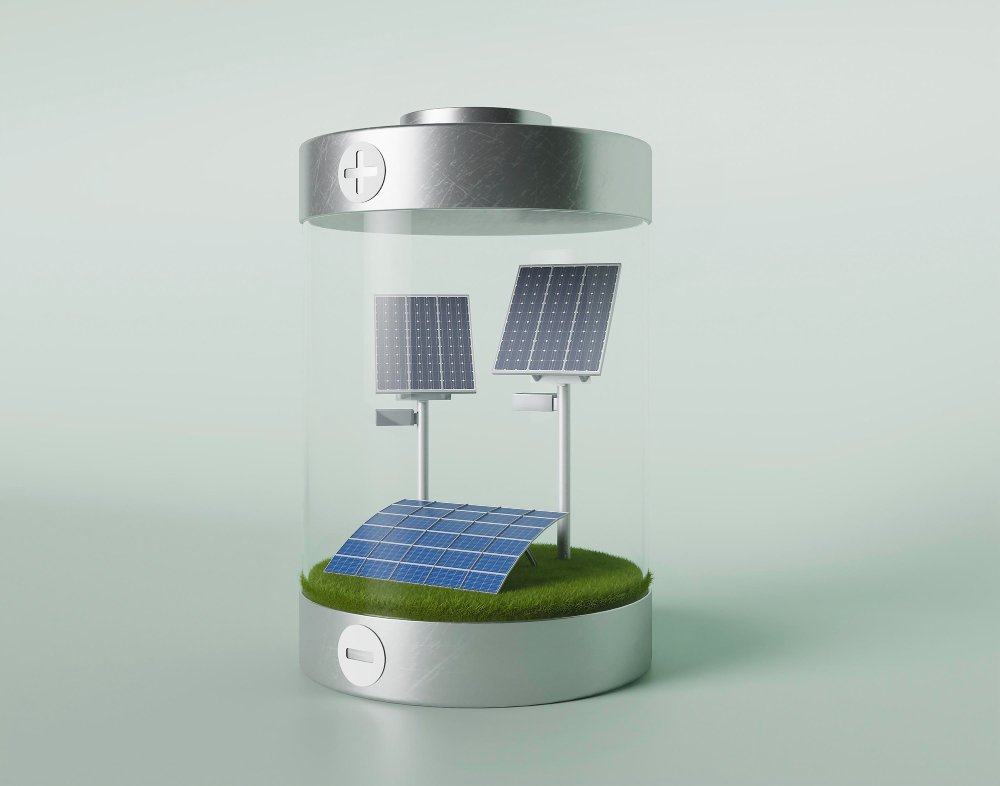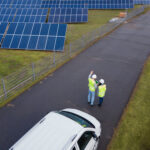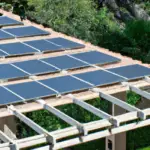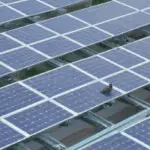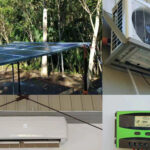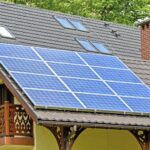As the world continues to shift towards renewable energy sources, more and more people are looking for ways to reduce their carbon footprint and rely less on fossil fuels. One area where this is particularly important is in compressed air systems, which are used in everything from home workshops to industrial manufacturing facilities. Traditional air compressors can be quite expensive to operate, as they require a constant supply of electricity to run. However, there is a solution that can help you save money while also doing your part for the environment: solar-powered air compressor.
In this blog post, we’ll take a closer look at what solar-powered air compressors are, how they work, and why they might be the right choice for your home or business. We’ll also discuss some of the benefits and potential drawbacks of these systems, so you can make an informed decision about whether or not they’re right for you.
What are Solar-Powered Air Compressors?
A solar-powered air compressor is exactly what it sounds like – an air compressor that runs on solar power instead of traditional electricity. These systems use photovoltaic (PV) panels to convert sunlight into electrical energy, which is then stored in a battery bank. The battery bank powers a DC-to-AC inverter, which converts the DC power from the batteries into AC power that can be used to run the air compressor.
The compressor itself is typically a hermetic reciprocating compressor, which uses a piston and cylinder arrangement to compress air. This compressed air can then be stored in a tank for later use, or it can be used directly to power tools and equipment.
How Do Solar-Powered Air Compressors Work?
To understand how a solar-powered air compressor works, let’s break down the different components of the system:
- PV Panels: These are the solar panels that capture sunlight and convert it into electrical energy. The panels are connected to a charge controller, which regulates the flow of energy to the battery bank.
- Battery Bank: The battery bank stores excess energy generated by the PV panels during the day, which can then be used to power the air compressor when needed.
- DC-to-AC Inverter: This device converts the DC power from the battery bank into AC power that can be used to run the air compressor.
- Air Compressor: The compressor takes in ambient air and compresses it, storing it in a pressure vessel or tank.
- Pressure Vessel: This is where the compressed air is stored until it’s needed. The pressure vessel is designed to withstand high pressures and is equipped with safety valves to prevent overpressurization.
- Control System: The control system manages the entire process, ensuring that the compressor and inverter are running efficiently and safely. It also monitors the pressure in the pressure vessel and turns the compressor off when the desired pressure level is reached.
Benefits of Solar-Powered Air Compressors
There are several reasons why solar-powered air compressors are becoming increasingly popular:
- Cost Savings: Solar-powered air compressors can significantly reduce your energy costs, especially if you live in a region with high electricity rates. Since the system relies on renewable energy from the sun, you won’t have to worry about fluctuations in electricity prices.
- Environmental Benefits: By harnessing the power of the sun, solar-powered air compressors produce zero emissions and don’t contribute to climate change. This makes them an attractive option for those who want to reduce their carbon footprint and do their part for the environment.
- Reliability: Solar-powered air compressors are relatively low maintenance, as they have fewer moving parts than traditional compressors. They’re also less likely to fail due to power outages or other electrical issues.
- Flexibility: These systems can be customized to meet your specific needs, making them suitable for a wide range of applications, from residential garage workshops to large-scale industrial operations.
Drawbacks of Solar-Powered Air Compressors
While solar-powered air compressors offer many advantages, there are also some potential drawbacks to consider:
- Intermittent Power Source: Solar-powered air compressors rely on sunlight as their power source, which means they can only operate during daylight hours. This can limit their usefulness if you need compressed air outside of normal daylight hours.
- High Upfront Costs: While solar-powered air compressors can save you money in the long run, they tend to have higher upfront costs compared to traditional compressors. The cost of the solar panels, battery bank, and other components can add up quickly.
- Limited Capacity: Solar-powered air compressors typically have smaller capacities compared to traditional compressors. This means they may not be suitable for applications that require high volumes of compressed air.
- Maintenance Challenges: Solar-powered air compressors require regular maintenance to ensure optimal performance. This includes cleaning the solar panels, checking the battery bank, and monitoring the system’s overall health.
- Energy Storage Limitations: The amount of energy that can be stored in a battery bank is limited, which means that the compressor may not be able to run continuously during periods of low sunlight. This can result in reduced air pressure or even complete shutdowns.
Who Should Consider Solar-Powered Air Compressors?
Despite the potential drawbacks, solar-powered air compressors can still be an excellent choice for certain individuals and organizations. Here are some examples:
- Remote Locations: Solar-powered air compressors can be ideal for remote locations where access to electricity is limited or non-existent. They can provide a reliable source of compressed air without the need for grid power.
- Off-Grid Applications: Similarly, solar-powered air compressors can be used in off-grid applications such as agricultural farms, mining operations, or construction sites.
- Environmentally Conscious Organizations: Companies or institutions that prioritize sustainability and reducing their environmental impact may find solar-powered air compressors appealing. They can help lower greenhouse gas emissions and promote renewable energy usage.
- Cost-Conscious Users: Solar-powered air compressors can save users money on energy costs over time, making them a cost-effective solution for those who use compressed air regularly.
- Backup Power Systems: Solar-powered air compressors can serve as backup power systems during power outages or natural disasters. They can provide a consistent source of compressed air, even when the grid is down.
Cost of Solar-Powered Air Compressors
The cost of solar-powered air compressors can vary depending on several factors, including the size of the compressor, the type of solar panel, and the battery capacity. On average, a small to medium-sized solar-powered air compressor can cost anywhere from $500 to $2,000. Larger models designed for heavy-duty use can cost upwards of $3,000 to $5,000.
It’s important to note that while the initial cost of a solar-powered air compressor may be higher than a traditional compressor, the long-term savings on energy costs can make up for the difference. Additionally, many states offer rebates and incentives for businesses and homeowners who install solar-powered equipment, which can further offset the cost.
How to Choose a Solar-Powered Air Compressor
Choosing the right solar-powered air compressor for your needs requires careful consideration of several factors. Here are some steps to follow:
Determine your Air Requirements
Calculate the CFM (cubic feet per minute) and PSI (pounds per square inch) required for your pneumatic tools and equipment. This will help you select the appropriate size of the compressor.
Assess your Power Needs
Evaluate the electrical load of your pneumatic tools and equipment to determine the correct size of solar panel and battery needed to power the compressor.
Choose the Right Solar Panel
Select a solar panel with sufficient wattage to power the compressor and charge the battery. Look for a panel with a high efficiency rating (such as 20-22%) and durable construction.
Select a Compatible Battery
Choose a deep cycle battery with enough capacity to store excess energy generated by the solar panel during peak sunlight hours. The battery should be able to provide enough power to run the compressor for at least 8 hours on a single charge.
Consider Additional Features
Some solar-powered air compressors come equipped with advanced features such as automatic start/stop technology, voltage regulation, and remote control operation. Consider what features are important to you and look for a model that fits your needs.
Check the Warranty
Make sure to check the manufacturer’s warranty on both the compressor and the solar panel. A good warranty can provide peace of mind and protect your investment.
Read Reviews and Compare Prices
Research different brands and models of solar-powered air compressors, read customer reviews, and compare prices to find the best value for your money.
Conclusion
Solar-powered air compressors offer a unique set of advantages, including cost savings, environmental benefits, reliability, flexibility, and backup power capabilities. While they also come with some limitations, such as intermittent power sources, high upfront costs, limited capacity, maintenance challenges, and energy storage limitations, they can still be an excellent choice for certain individuals and organizations. By understanding the pros and cons of solar-powered air compressors, you can determine whether they’re the right fit for your needs.

